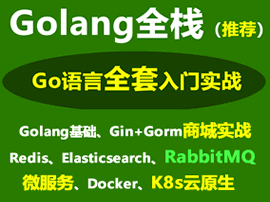Golang Structs.ToMap工具使用技巧
在使用Golang的Structs.ToMap工具时遇到几个问题:1) 如何处理嵌套结构体的转换?2) 如果结构体字段包含指针类型,转换时需要注意什么?3) 是否有性能优化的技巧?4) 能否自定义转换后的map键名?希望有经验的朋友能分享一些实际使用中的技巧和避坑指南。
2 回复
在Golang中,将struct转为map的常用方法:
- 使用json序列化:
import "encoding/json"
func StructToMap(obj interface{}) map[string]interface{} {
data, _ := json.Marshal(obj)
result := make(map[string]interface{})
json.Unmarshal(data, &result)
return result
}
- 使用反射遍历字段:
import "reflect"
func StructToMapReflect(obj interface{}) map[string]interface{} {
v := reflect.ValueOf(obj)
result := make(map[string]interface{})
for i := 0; i < v.NumField(); i++ {
field := v.Type().Field(i)
value := v.Field(i).Interface()
result[field.Name] = value
}
return result
}
使用技巧:
- 处理嵌套struct时,json方法更简单
- 需要忽略某些字段时,使用
json:"-"标签 - 反射方法可自定义字段名映射
- 注意处理空值和指针类型
推荐使用json方法,代码简洁且性能较好。
更多关于Golang Structs.ToMap工具使用技巧的实战系列教程也可以访问 https://www.itying.com/category-94-b0.html
在Golang中,将结构体转换为map是一个常见的需求,特别是在处理JSON序列化、数据库操作或API参数传递时。以下是几种实用的实现方法和技巧:
1. 使用反射(Reflection)实现通用转换
通过反射遍历结构体字段,提取标签和值,适合动态场景。
package main
import (
"fmt"
"reflect"
)
func StructToMap(obj interface{}) map[string]interface{} {
result := make(map[string]interface{})
val := reflect.ValueOf(obj)
if val.Kind() == reflect.Ptr {
val = val.Elem()
}
typ := val.Type()
for i := 0; i < val.NumField(); i++ {
field := typ.Field(i)
value := val.Field(i)
// 跳过不可导出字段
if field.PkgPath != "" {
continue
}
// 使用JSON标签作为key,若无标签则用字段名
key := field.Name
if jsonTag := field.Tag.Get("json"); jsonTag != "" {
key = jsonTag
}
result[key] = value.Interface()
}
return result
}
type User struct {
Name string `json:"name"`
Age int `json:"age"`
Email string `json:"email,omitempty"`
}
func main() {
user := User{Name: "Alice", Age: 30, Email: "alice@example.com"}
m := StructToMap(&user)
fmt.Println(m) // 输出: map[age:30 email:alice@example.com name:Alice]
}
2. 使用第三方库(如 mapstructure)
mapstructure 库可以灵活处理结构体与map的相互转换,支持标签和嵌套结构。
安装:
go get github.com/mitchellh/mapstructure
示例:
package main
import (
"fmt"
"github.com/mitchellh/mapstructure"
)
type User struct {
Name string `mapstructure:"username"`
Age int `mapstructure:"user_age"`
}
func main() {
user := User{Name: "Bob", Age: 25}
var data map[string]interface{}
_ = mapstructure.Decode(user, &data)
fmt.Println(data) // 输出: map[username:Bob user_age:25]
}
3. 手动转换(简单场景)
对于字段较少或不需要动态处理的场景,直接手动赋值更高效。
func UserToMap(user User) map[string]interface{} {
return map[string]interface{}{
"name": user.Name,
"age": user.Age,
"email": user.Email,
}
}
使用技巧与注意事项:
- 处理嵌套结构体:反射方法需递归处理嵌套字段,或使用
mapstructure自动支持。 - 性能考虑:反射有一定开销,高频场景建议预生成或使用代码生成工具(如
easyjson)。 - 字段过滤:通过标签(如
omitempty)或自定义逻辑排除空值字段。 - 类型安全:确保map值类型与目标兼容,避免运行时错误。
根据需求选择合适的方法:反射适用于通用工具,第三方库简化复杂映射,手动转换保证性能。






